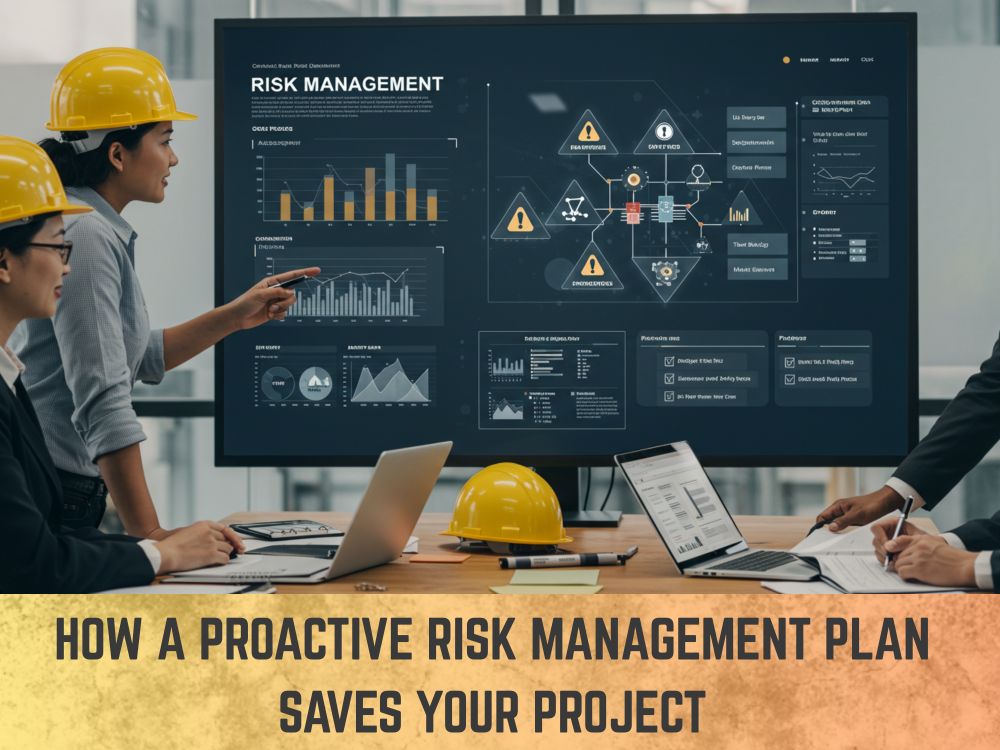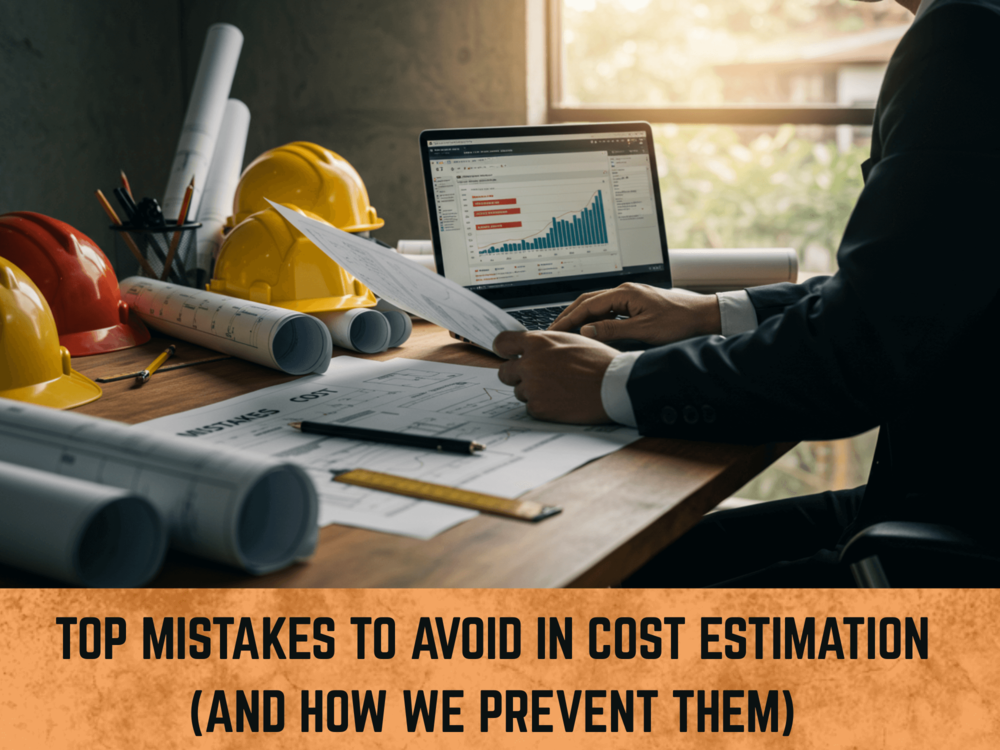In the world of construction, risk is an ever-present force. It lurks in the form of material price spikes, unexpected site conditions, subcontractor defaults, and a myriad of other issues that can derail a project’s timeline and budget. For a U.S. General Contractor, simply reacting to these problems as they arise is a recipe for financial disaster. A far more effective and profitable strategy is to implement a proactive risk management plan.
This isn’t just about having a contingency fund. It’s about systematically identifying, analyzing, and strategizing for potential threats before they can impact your project. By shifting from a reactive stance to a proactive one, you not only protect your bottom line but also build a reputation for reliability and control.
1. The Cost of Being Reactive
A reactive approach to risk is expensive. When a problem occurs without a pre-planned solution, it often triggers a cascade of negative consequences.
Financial Fallout: Unexpected issues lead to unbudgeted expenses. A labor shortage, for example, might force you to hire temporary workers at a higher rate. A sudden delay could lead to costly equipment rental extensions or late fees.
Schedule Delays: A single unaddressed risk can throw off your entire project timeline. When one task is delayed, it can push back every subsequent task, disrupting subcontractor schedules and potentially missing a crucial completion date.
Strained Relationships: Unforeseen problems can create tension with clients, subcontractors, and suppliers. Disputes over who is responsible for a cost overrun or a delay can damage professional relationships and lead to legal battles.
A reactive mindset forces you to solve problems under pressure, often with limited options and at a higher cost.
2. The Proactive Risk Management Process
A proactive approach turns risk from a threat into a manageable variable. It involves a structured, five-step process that should be integrated into your project from the bidding phase onward.
Step 1: Risk Identification
This is the brainstorming phase. Assemble your project team, including key subcontractors, to identify every potential risk. Think broadly across all project phases.
- Financial Risks: Material cost volatility, inaccurate estimates, or cash flow issues.
- Operational Risks: Delays in obtaining permits, equipment breakdowns, or subcontractor defaults.
- Environmental Risks: Unforeseen site conditions like contaminated soil or unstable ground.
- Safety Risks: On-site accidents or non-compliance with OSHA regulations.
- Reputational Risks: Negative publicity or client dissatisfaction.
Document every identified risk in a centralized log, no matter how small.
Step 2: Risk Analysis
Once identified, each risk needs to be analyzed based on its potential impact and likelihood of occurring. A simple matrix can help you visualize this:
- High Impact / High Likelihood: A critical risk that requires immediate action.
- High Impact / Low Likelihood: A major risk that requires a contingency plan.
- Low Impact / High Likelihood: A frequent but minor risk that can be managed with standard procedures.
- Low Impact / Low Likelihood: A minor risk that can be monitored but doesn’t require extensive planning.
This analysis helps you prioritize your focus and resources.
Step 3: Response Planning
This is where you develop strategies to manage each identified risk. There are four primary approaches:
- Avoid: Altering the project plan to eliminate the risk altogether. For example, using a different material to avoid a supply chain risk.
- Mitigate: Taking steps to reduce the impact or likelihood of the risk. This could mean pre-ordering critical materials to protect against price spikes or hiring a pre-vetted, reliable subcontractor.
- Transfer: Shifting the responsibility of the risk to a third party. The most common example is purchasing insurance or including specific clauses in subcontractor contracts.
- Accept: Deciding to take no action and simply deal with the risk if it occurs. This is appropriate for low-impact, low-likelihood risks.
Step 4: Risk Monitoring and Control
A risk management plan is not a static document. It’s a living part of your project. Throughout the project lifecycle, you must continuously monitor risks, track their status, and update your plan as new information becomes available. Regular team meetings should include a discussion on current risks and any new ones that have been identified.
3. The Tangible Benefits of a Proactive Plan
Implementing a proactive risk management plan delivers clear, measurable benefits.
- Increased Budget Accuracy: By accounting for potential costs and building in appropriate contingencies, your estimates become more accurate and reliable. This protects your profit margins and builds client trust.
- Improved Schedule Reliability: Anticipating potential delays allows you to build flexibility into your schedule. You can pre-plan alternative courses of action, ensuring that minor setbacks don’t snowball into major project delays.
- Enhanced Reputation: When you can consistently deliver projects on time and within budget, you gain a reputation for professionalism and reliability. This is a powerful advantage in a competitive market and can lead to more business and stronger client relationships.
- Reduced Stress: Knowing that you have a plan for a wide range of potential problems significantly reduces the stress on the project manager and the entire team. It allows for a more focused and confident approach to project execution.
In an industry where success is measured in dollars and days, the ability to anticipate and manage risk is no longer a luxury—it’s a necessity. By making a proactive risk management plan a core part of your project strategy, you ensure your project’s success and secure your business’s future.




